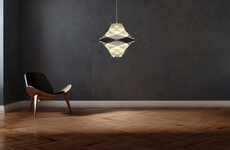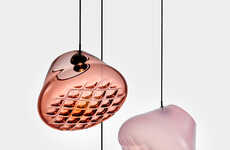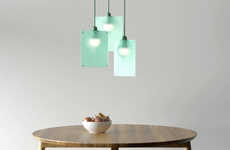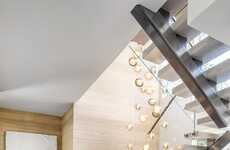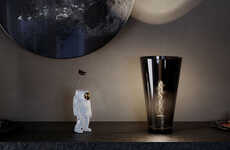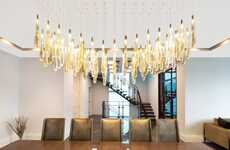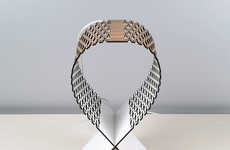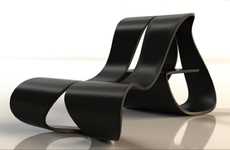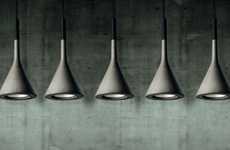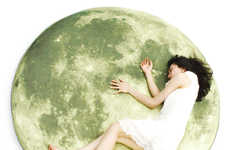
Tom Dixon's Etch Web Pendant Lamp Casts Intricate Shadows
Meghan Young — March 9, 2012 — Art & Design
References: tomdixon.net & contemporist
The Etch Web pendant lamp is gorgeously delicate. A cross between a three-dimensional geometric shape and an intricate cobweb, it is both prismatic and latticed. The stunning cutouts work with the light bulb itself to cast an array of breathtaking patterns, making an entire room look like it's been covered with spiderwebs.
Created by British furniture design and manufacturing company Tom Dixon, the Etch Web pendant lamp explores the idea of mathematics in correlation with geometry. Although the pentagon globe is enormous in scope, it is incredibly lightweight. Fashioned out of copper anodised aluminium, the light fixture was cutout using digital photo-acid etching. The result is an unusual open structure that casts atmospheric angular shadows when lit.
Created by British furniture design and manufacturing company Tom Dixon, the Etch Web pendant lamp explores the idea of mathematics in correlation with geometry. Although the pentagon globe is enormous in scope, it is incredibly lightweight. Fashioned out of copper anodised aluminium, the light fixture was cutout using digital photo-acid etching. The result is an unusual open structure that casts atmospheric angular shadows when lit.
Trend Themes
1. Geometric Lighting Design - Opportunities in designing lighting fixtures that incorporate mathematical principles and geometric shapes to create intricate shadows and patterns.
2. Lightweight Metal Furniture - Opportunities in leveraging digital manufacturing techniques to create lightweight and intricate furniture designs using metals like copper anodised aluminum.
3. Open Structure Fixtures - Opportunities in creating fixtures that have open and unusual structures that result in atmospheric and angular shadows when lit.
Industry Implications
1. Interior Design - Innovative geometric lighting and lightweight metal furniture can be leveraged by designers to create unique and stunning interior designs.
2. Manufacturing - Digital manufacturing techniques can be harnessed to create intricate and lightweight furniture designs that were not possible through traditional techniques.
3. Lighting Fixtures - Designing lighting fixtures that incorporate mathematical principles and open structures can create breathtaking patterns and shadows in any space.
4.9
Score
Popularity
Activity
Freshness



